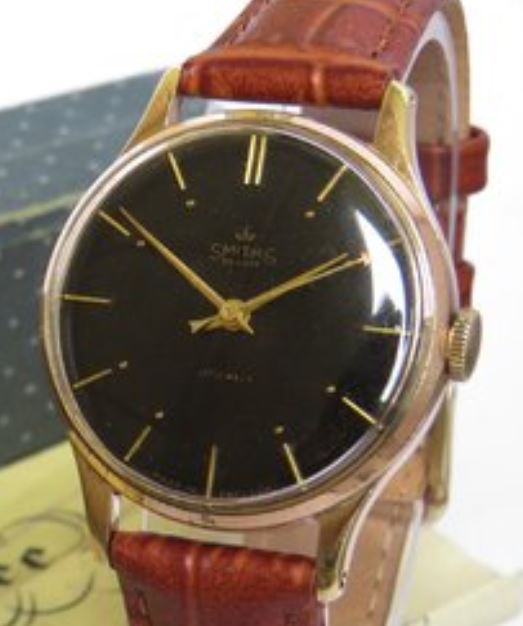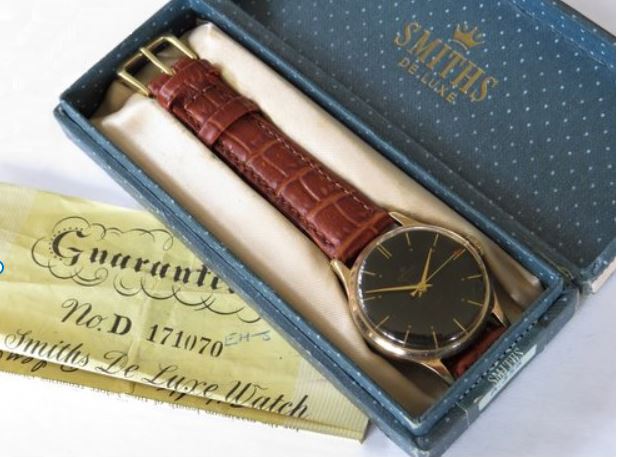Last Updated on August 21, 2025 by Jason
Smiths is an iconic English watch brand. The earliest Smiths watches are pocket watches from the 19th Century, either made in England or Switzerland and cased here or abroad. Most of the watches are signed S.Smith on the dial or movement, or potentially both. Smiths vintage watches occupy a distinct area of collecting. They are of particular interest to collectors of English timepieces. The price of vintage Smiths watches is defined more by market trends on vintage watches in general, rather than specifically English products. This is likely to change as more collectors become aware of the brand.
History
Samuel Smith had a jewellery shop at 12 Newington Causeway in south-east London in 1851. In 1875, Samuel Smith died at the age of 49. During his time in control of the firm, it had experienced a rapid rate of growth. In 1872, it relocated the centre of its operations to 85 The Strand, next door to the premises of Charles Frodsham. In 1885, a large business operating as diamond merchants emerged, based at 6 Grand Hotel Buildings, Trafalgar Square, and from 1895 at 68 Piccadilly. They were not watchmakers as such, but rather retailers. They had the watches made and branded with their name. Smiths watches were typically manufactured by Nicole Nielsen of Soho Square. In the early 20th century, Smiths branched out into manufacturing automobile accessories, which was to become the largest part of its business (Smiths Group at Wikipedia).
World War 2
In the late 1930s, with war looming, the British government was keen to establish British manufacture of soon to be unobtainable escapements, primarily for aircraft instruments. After signing some Ministry of Defence contracts, Smiths contributed to the war effort by opening a factory at Cheltenham, where they produced pocket watches and wristwatches for the military.
Post War
After the war, the demand for military watches dropped considerably, and the government contracts dwindled. However, Smiths continued to produce high-quality wristwatches for the domestic market out of their Cheltenham factory. In a partnership with the London-based arm of the Ingersoll watch company, Smiths opened a new factory in Ystradgynlais, Wales. The new factory was established with government assistance to rebuild the British watchmaking industry. The Ystradgynlais factory produced a range of budget, low-jewel, Ingersoll and Smiths ‘Empire’ watches and clocks.
Those watches manufactured in the Cheltenham factory had “Made in England” printed on the dial. Those manufactured in the Ystradgynlais factory had “Made in GT Britain” printed on the dial. Both the Services and the Smiths Empire pocket watches were made in Wales. They are likely to have pin-pallet movements and a chrome-plated brass case. They were robust watches that would have been affordable to the average man on the street. In the final years of watch production, Smiths started using Swiss and Japanese-made movements (Smiths watches at Chronopedia)..
Fine watch-making at Cheltenham ceased in 1971. Watchmaking in the Ystradgynlais factory continued from 1946/7 until 1979, at which point the company stopped producing all timepieces. The company still exists today as Smiths Industries.
[IST] + [RAD] + [GIN] + [LYS] is the correct pronunciation for ‘Ystradgynlais’
Collecting Smiths watches
Smiths vintage watches are quite common, especially around the Cheltenham area, and so crop up in antique shops, charity shops and at auction. According to British GQ, there are three types of Smiths vintage watches worth collecting. These are signed, “Made In England”, “Made in Britain”, and those that are “Swiss or Japanese made”. All serious collectors of vintage Smiths watches focus on the “Made in England” watches. That isn’t to say that the other makes can’t hold sentimental value as family heirlooms. As always, original boxes and paperwork add to the value of any vintage watch.
Popular makes
The Smiths De Luxe. In its water-resistant case, this was the watch said to be carried by Sir Edmund Hillary on his Everest ascent. Even if the case back states that a watch is waterproof. However, as with any vintage watch, it should be kept away from water and moisture.
The Smiths Astral. Perfect as a dress watch, with its central seconds, 34.5mm case and thin bezel. A rare Astral date model does exist. However, it is not quickset, which can be a little irritating to set.
The Smiths Everest. These watches were produced using various-sized cases and movements. The most collectable are the later ones with a Smiths hand-wound 0104 movements and 35mm cases. The movement is considered one of the finest English-made calibres made in Cheltenham. It has 19 jewels, as well as Kif shockproofing. The Everest can also be found badged as Imperial.
Condition
As in all vintage watches, condition is everything for serious collectors. Post-war austerity meant that solid cases were expensive. A workaround was the use of metal plating. Always check the condition of the gold plating. Solid metal is obviously better wearing, but more expensive. Movements are less of a problem as parts are still freely available. However, always make sure the movement is free of corrosion or pitting. This can be a sign that the watch has been exposed to moisture.
Summary
Smiths watches are a brand well worth considering. Interest is growing in the Smiths brand, particularly amongst UK collectors. Prices have climbed sharply in the last few years. However, some sellers may not realise the difference between a budget ” Empire” and a quality “Made in England”. As homegrown interest rises, so will the price. Now is the time to add a Smiths to your collection.
Related content
Smiths at Grace’s Guides.


Thank you for an interesting article.
I recently purchased an Everest 15 jewel made in england watch.
When cleaning the back it appears to be silver. Is this likely?
Hi John, a good choice in watches! To my knowledge, the cases of the Everest were stainless steel, chrome-plated or gold. I have not seen a silver version. Once stainless steel became available, silver was largely discarded as a watch case material. This was because the stainless steel had much the same appearance, but was much more hard wearing. If it was silver, it would have British halmmarks inside the case. I hope the watch is working well and you get the chance to wear it on occasion. Thanks for taking the time to comment, Jason.